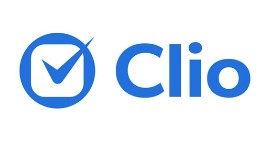How Legaltech Can Help Increase Firm Revenue

It’s been a tough few years for all businesses, and law firms are no exception. They’re currently facing a multitude of challenges—all of which threaten to eat into your law firm’s revenue.
You’ve likely seen the bad-news stories: The pandemic wreaked havoc on the global economy, with the UK economy contracting by 9.7% (the steepest drop since records began). Taxes, energy prices, and the cost of living have all increased sharply over the past 12 months—meaning inflation has reached near 40-year highs.
In the face of such challenging circumstances, it’s incumbent on law firms to act to protect their firm revenue and profitability. How do law firms stay profitable in difficult times?
As our research consistently shows, one important answer is to adopt legaltech solutions to enhance your processes and improve your utilisation and collection rates. According to the 2022 Legal Trends Report, these figures sit at 33% and 89% respectively, showing there’s still much work to be done.
This article will delve into five ways that legaltech can increase firm revenue, exploring:
- Increasing lawyer efficiency
- Calculating law firm profit by partner (utilisation rates)
- Billing all fee-earning work
- Collecting all that you’re owed
- Showing you where your best leads are coming from
1. Increasing lawyer efficiency
Your firm’s time is incredibly valuable. If you’re not actively maximising lawyer efficiency at your firm, ensuring they’re spending company time on high-value activities that tangibly move the needle, you’re missing out on revenue. We covered this topic in more detail in our blog, “How Legal Workflow Automation Increases Law Firm Revenue and Efficiency,” but it’s worth reiterating in this article too.
Look, we’re not saying that every hour of the day needs to be billable—that’s unrealistic. However, it’s important to understand how effectively lawyers are utilising their non-fee earning time. Are they using chunks of their week just staying on top of their email inbox, engaged in phone or email tag to schedule upcoming appointments, or trying to manually onboard new clients into spreadsheets and diaries?
These common firm activities, when not managed effectively, can eat up hours of every week. If your experienced, expert lawyers are spending their days completing tasks that technology could do in a fraction of the time, they’re not necessarily spending their days wisely.
Automating these processes using legaltech frees lawyers up to decide how to spend their non-fee-earning time. They could use these extra few hours each week to stay up-to-speed with legislative changes and sign up for training sessions to understand the industry’s latest best practices. Or, they could get out there and network, build new relationships, and follow up with potential leads.
2. Calculating contributions by partner
If you’re not accurately calculating the profit from each partner, you may be missing out on easy ways to increase revenue. By identifying high- and low-earners, you can then dive in and begin to understand what separates the two and where revenue is being lost.
Let’s quickly explain how you can calculate revenue by partner using two simple metrics: utilisation rates and time recording.
Get clear on your utilisation rates
By calculating your utilisation rate, you can see just how many hours per day each partner spends on billable work. Simply use the following formula:
Billable hours worked / number of hours worked in a day = utilisation rate.
The results might shock you.
According to the 2022 Legal Trends Report, lawyers are completing just 2.6 hours of billable work per day. You read that correctly: lawyers are on average losing 5.4 hours per day on non-fee-earning work.
Partners with low utilisation rates clearly need to improve their efficiency—for instance, by implementing legaltech so that they can get on top of their administrative processes. Once you get clear on your utilisation rates, you can then begin to identify who needs help, why, and adopt the necessary solutions.
Recording time
You might be thinking: “Of course we record our time—how do you think we calculate our billable hours?”
That’s all well and good—but your lawyers should record all their time, not just their fee-earning hours. Recording billable hours might help with invoicing, but it does little to help improve firm-wide efficiency.
After all, lawyers should be spending their time on fee-earning activities. You’re not going to identify inefficiencies that are affecting your firm’s revenue by simply analysing what you’re already doing well (and billing for).
Rather, lawyers should habitually record every single thing they do every day. Better still, if they do this following a consistent, firm-wide process, then firms can easily analyse their firm’s overall efficiency across all of its lawyers. This doesn’t need to be an onerous, manual process. After all, rather than increasing efficiency, that would do the exact opposite.
This is where time recording and case management software like Clio Manage can help. It offers a wide range of automatic time tracking capabilities, instantly populating every work entry into a comprehensive timesheet in the Activities page for each individual member of your firm.
Firms can then generate detailed time reports to understand exactly how their lawyers are spending their time, identify profitability-busting inefficiencies, and devise the appropriate solutions.
You can try Clio for free here.
This article was originally published by Clio—read the full article.
About Cashroom
 Cashroom provides expert outsourced accounting services for Law Firms including Bookkeeping, Management Accounts and Payroll services. Our mission is to free lawyers from the complexities of legal accounting by supporting the industry with accurate management information and allowing lawyers to do what they do best – practice law.
Cashroom provides expert outsourced accounting services for Law Firms including Bookkeeping, Management Accounts and Payroll services. Our mission is to free lawyers from the complexities of legal accounting by supporting the industry with accurate management information and allowing lawyers to do what they do best – practice law.


